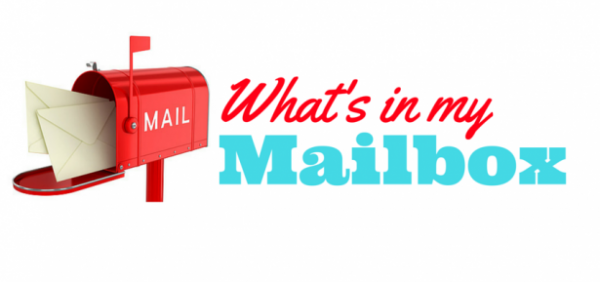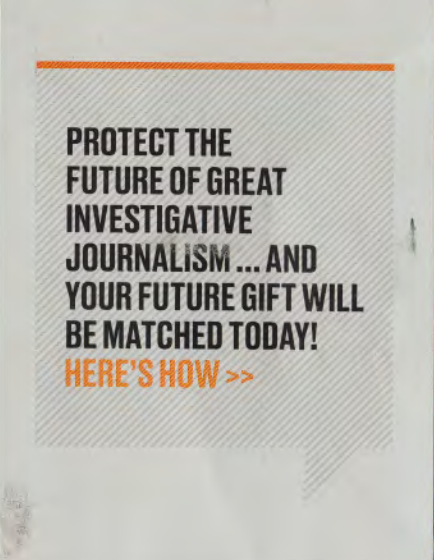
I like to joke that I receive a lot of legacy packs in the mail these days. Not because of any personal connection to the mission, but for the simple fact that I am now officially old AF.
But when this self-mailer from Mother Jones, a reader-supported investigative news organization, landed in my mailbox recently, it was a different story. Why? Because I’ve been a reader and a subscriber, on and off, to Mother Jones magazine since I was a teenager.
This piece caught my eye, so I shared it with two of my favorite nonprofit communications specialists to get their feedback.
Tom Ahern, nonprofit communications expert and author of countless fundraising classics including Making Money with Donor Newsletters and How to Write Fundraising Materials That Raise More Money: The Art, the Science, the Secrets weighed in:
The first few seconds matter most in messaging, according to neuroscientist Dan Hill.
I.e., recipients of messaging often lean in — or lean away — within 1-3 seconds.
When I looked at this example for the first time, I leaned in immediately.
Why? Because of a personal connection.I discovered the profound importance of Mother Jones one night in Alaska, when Simone and I were crashing in someone’s well-appointed backwoods cabin. We’d traded a few nights in exchange for Simone and I speaking pro bono to Anchorage-area fundraisers.
Only downside: entertainment was limited. TV reception was bad, etc. However the cabin’s owners subscribed to Mother Jones. I started reading … and grew wide-eyed and amazed and fanatically devoted … all in just one issue. I became a Mother Jones-lover/respecter for life.
So … would I open this appeal from Mother Jones? Yes, I would.
Why would I open ~ #1? Because since the night in AK, I’ve trusted the reporting in Mother Jones. Our household subscribes to The Nation (very left), The New Yorker (liberal and thorough), the Wall Street Journal (for its reporting, not its editorial pages), The Atlantic (first-class investigative), The Economist (balanced world news with strong coverage of politics), The New York Times (great reporting that breaks big stories)…etc. You get our drift. Mother Jones holds its own with all those other pubs.
Why open ~ #2? This is a fond memory. Simone and I loved AK; we went back repeatedly to speak and hike and enjoy dear friends and colleagues there. And, as I’ve said, Mother Jones was a unique piece of our AK experience. We were approaching our 38th year of marriage this year. A massive stroke killed Simone in May.
Therefore: in total, for me, personally, this appeal would get over the 1st hurdle every DM piece must clear: I would NOT throw it away … instead, I would likely open it > because I have a connection at two levels at least: respect for its work and my own dearly departed family memories.
Then what happens?
Bit of a mess. Not fatal, though.
Comms like this unfold as a series of spreads. I.e., the left-hand page and the right-hand page work TOGETHER to convey a message to the reader’s brain.
On the left, the mailer offers SOCIAL proof. (What did others LIKE me do? “Why I rose to the challenge”). > Good!!!!!!!!! On the right, though, the design buries the message. Designers who are unaware of Colin Wheildon’s groundbreaking research into typographic treatments — and those treatments impact on “reading ease” — often do bury the message by one simple choice: they deploy REVERSE type.
According to Wheildon’s lab experiments, reverse type is what you use when you DON’T much care if people read or respond to what you’re saying.
John Lepp is a direct response, marketing, and design expert with more than 20 years’ experience working with charities across Canada and around the world.
I’ve had a chance to look this over and of course, I have no idea how this piece has performed or what sort of strategy has gone in to the development of it.
A few observations/suggestions:
A dedicated mail pack will almost always perform better that a self mailer (or like type) mailing. You are having a very special type of conversation with your donor. This feels like marketing. Not a conversation.
When you acknowledge that most donors are over the age of 65 and that almost everyone over the age of 45 has some type of visual impairment, there are a few things here i would rethink. Using a font size of at least 14 point or larger. No reversed out type, ever. No ALL CAPS type. No running type over a background image or texture. No using glossy paper.
It sort of answered the basic case questioning of “WHY ME?” and “WHY NOW? But what is missing is the voice of a beneficiary and the voice of a organizational human. I am happy to see that there is a direct link to talk to Cathy, but I would include a little photo of her. Humans give to humans.
And International Legacy Consultant Ligia Peña, CFRE spoke to the match:
In my twenty years of experience in fundraising, I had never heard of a matching legacy campaign until a couple of years ago when I taught a legacy masterclass and a participant shared they had run such a campaign. Truthfully, I’m conflicted with the concept. The person explained the objective is to get other donors to include a gift in their will to the charity which made me feel rather uncomfortable. It feels manipulative which runs counter to the spirit and the ethics behind legacy giving, especially considering the target audience (older donors are often targets of scams and pressure in sales, etc.).
However, the way Mother Jones is doing it is smart in my opinion. It’s a way of getting donors to declare more details about their legacy gifts so they can leverage the information for major gifts from other donors. It’s smart and I like the idea. I am super curious to know how much uptake they get from this campaign. I mean, baby boomers, as a generation, are traditionally reluctant to disclose the terms of their planned gift so I’m curious how many will disclose. Conversely, I suspect that Gen Xers will be way more receptive to this approach because as a generation we have less hangups about money.
P.S.: I am open to have my mind changed about the legacy matching campaign that I first referenced to, I’m open-minded after all! 🙂
And here at Basics & More, I teach a comprehensive legacy giving class tailored to small to mid-sized nonprofits. I concur with the feedback from both Tom and John. As John notes, a dedicated mail pack typically outperforms a self-mailer, and the examples included in our class are one-to-one mail packages rather than glossy marketing pieces. Designing direct mail for readability is not a skill-set many graphic designers possess. I’m not privy to how this piece performed, who it was mailed to, etc. It’s the first time, though, that I’ve seen a match tied to a legacy ask. Matches typically increase response and it will be interesting to see if that’s the case here. What is important, when considering your nonprofit’s legacy marketing, is your donor base and their motivations.


















 I can’t wait to meet with you personally.
I can’t wait to meet with you personally.
Comments on this entry are closed.